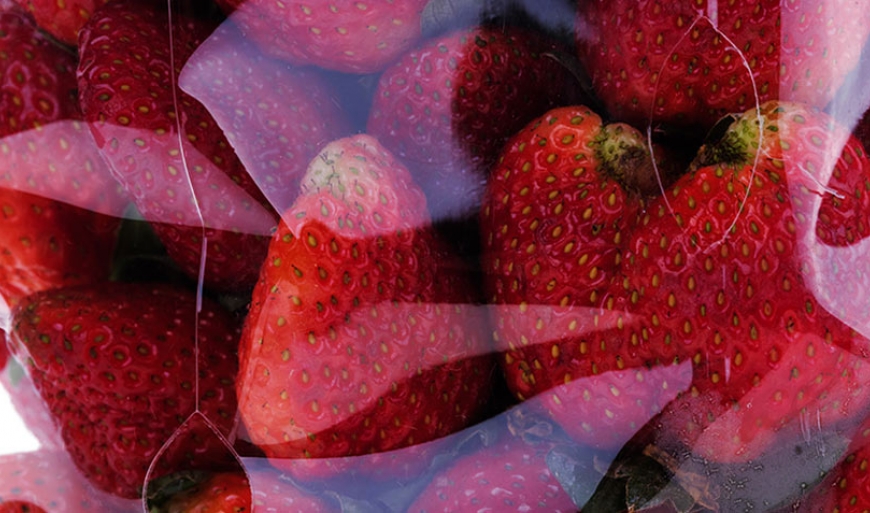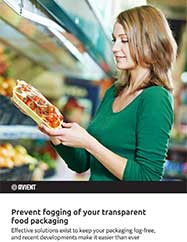Minimize Fogging in Food Packaging
Effective solutions exist to keep your packaging clear, and recent developments make it easier than ever to do so.

Fog formation on food packaging films frustrates consumers, can lead to product spoilage, and ultimately hinders sales. Fortunately there are ways to minimize fogging.
Estimates vary, but industry experts generally acknowledge that about 40-50% of all food meant for human consumption spoils and is thrown away before being consumed. Food packaging helps limit that waste by providing protection for food so that it remains fresh, tasty and safe to eat. Effective packaging also serves a significant role by increasing attractiveness and the likelihood that customers will purchase a specific food.
Even experienced processors and flexible thermoplastic film converters can be challenged when it comes to minimizing condensation inside packaging, commonly known as fogging. Fogging in food packaging is most frequently seen on films used to protect fresh products in refrigerators and retail chiller cabinets. Why? Because the temperature is low enough to initiate condensation if the relative humidity is high enough. Fogging on food packaging is not only an aesthetic problem. It can also support bacterial growth. Depending on the product, fog can lead to spoilage.
There are two ways to improve anti-fog properties in polyolefin films:
- Treat the film and then spray a coating onto its surface after extrusion.
- Incorporate a specialty additive concentrate during extrusion of a film.
Spraying a coating on a film’s surface requires an investment in capital equipment and the unavoidable use of a secondary process in a film manufacturing line. Coating is a technology familiar to many manufacturers, and so it remains a common means of treating film. This and alternative antifogging systems are able to increase the surface energy of the film to meet that of the water, which results in a lower contact angle of the water droplets. As a result, adjoining water droplets merge and eventually spread out into a thin continuous film of water. With a nearly constant layer of water, translucency approaching the transparency of the film returns, and no single droplet emerges, either on the film or on the food.
What about the alternatives to coating? During film extrusion, you can introduce a specialty additive concentrate in concentrations formulated to produce anti-fogging effects. This method doesn’t require any secondary processing and uses the feeder that is already a component of almost every film extrusion line.
Anti-fog solutions developed for different film packaging systems
Specialty additive concentrates can be formulated for different types of packaging film. The addition of just a small amount of this concentrate during the film production process can make the difference between a product ending up in the shopping cart, or staying on the shelf—possibly until it has to be thrown away.
Some suppliers are also able to offer anti-fog solutions with EC and FDA food-contact compliance, enabling film producers to use the same anti-fogging product across multiple geographic regions.
Food packaging films have complex structures and may require a lamination step that bonds multiple film layers together. Tests have shown that some of the adhesives commonly used during film lamination can affect anti-fog performance, but additives have been developed that do not interact with these adhesives, maintain their properties after lamination of films, and maintain the sealability of the laminate.
In addition, there is no restriction on the use of anti-fog additives in food contact applications, because no Specific Migration Limit (SML, in EC and FDA regulations) applies to them.
For greater benefit, anti-fogging additives can be combined with other functional features in films to increase the overall customer-friendliness of a complete package.
What should you consider when selecting anti-fog methods for your fresh food packaging? The list includes:
- Type of film structure
- Percentage of water in the food
- Type of adhesive used
- Length of time between packaging of the product and its display at the point-of-sale
If you decide to use additives, taking a collaborative approach with your supplier can help you to speed development times and raise efficiency.
Learn more about your anti-fogging options by contacting an expert at Avient today!
EXPLORE THE ADDITIVE SOLUTIONS THAT CAN BRING THIS IDEA TO LIFE

Learn more about how anti-fog additives can help keep food fresh, safe and delicious in this white paper.
Premium Content Download